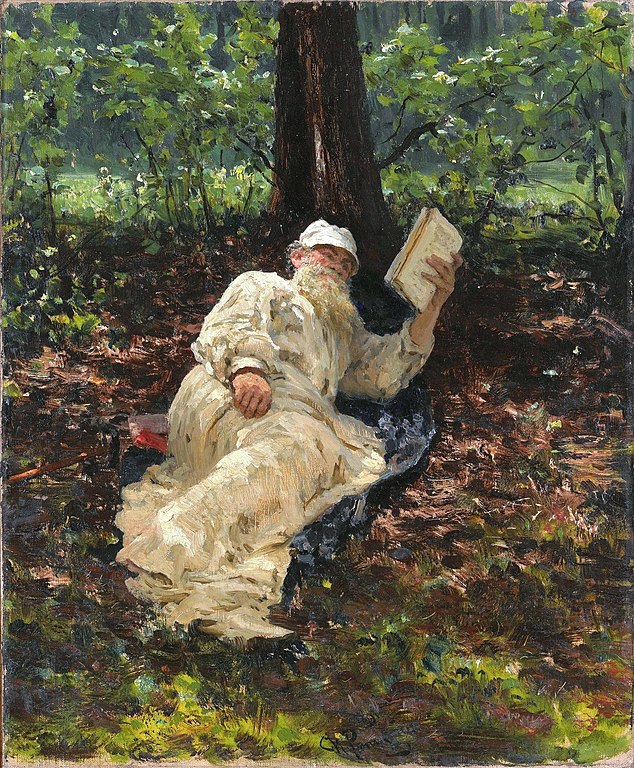Leo Tolstoy Archive
Written: 1904
Source: "Fables for Children," by Leo Tolstoy, translated from the original Russian and edited by leo Wiener, assistant Professor of Slavic Languages at Harvard University, published by Dana Estese Company, Boston, Edition De Luxe, limited to one thousand copies of which this is no. 411, copyright 1904, electrotyped and printed by C. H. Simonds and Co., Boston, Massachusetts, USA.
Transcription/Markup: Andy Carloff
Online Source: RevoltLib.com; 2021

I set out two hundred young apple-trees, and for three years I dug around them in the spring and the fall, and in winter wrapped them with straw against the hares. On the fourth year, when the snow melted, I went to take a look at my apple-trees. They had grown stouter during the winter: the bark was glossy and filled with sap; all the branches were sound, and at all the tips and axils there were pea-shaped flower-buds. Here and there the buds were bursting, and the purple edges of the flower-leaves could be seen. I knew that all the buds would be blossoms and fruit, and I was delighted as I looked at the apple-trees. But when I took off the wrapping from the first tree, I saw that down at the ground the bark was nibbled away, like a white ring, to the very wood. The mice had done that. I unwrapped a second tree, and the same had happened there. Of the two hundred trees not one was unharmed. I smeared pitch and wax on the nibbled spots; but when the trees were all in bloom, the blossoms at once fell off; there came out small leaves, and they, too, dropped off. The bark became wrinkled and black. Out of the two hundred apple-trees only nine were left. On these nine trees the bark had not been gnawed through all around, but strips of bark were left on the white ring. On the strips, where the bark held together, there grew out knots, and, although the trees suffered, they lived. All the rest were ruined; below the rings there came out shoots, but they were all wild.
The bark of the tree is like the arteries in man: through the arteries the blood goes to the whole body, and through the bark the sap goes along the tree and reaches the branches, leaves, and flowers. The whole inside of a tree may be taken out, as is often the case with old willows, and yet the tree will live so long as the bark is alive; but when the bark is ruined, the tree is gone. If a man's arteries are cut through, he will die, in the first place, because the blood will flow out, and in the second, because the blood will not be distributed through the body.
Even thus a birch dries up when the children bore a hole into it, in order to drink its sap, and all the sap flows out of it.
Just so the apple-trees were ruined because the mice gnawed the bark all around, and the sap could not rise from the roots to the branches, leaves, and flowers.